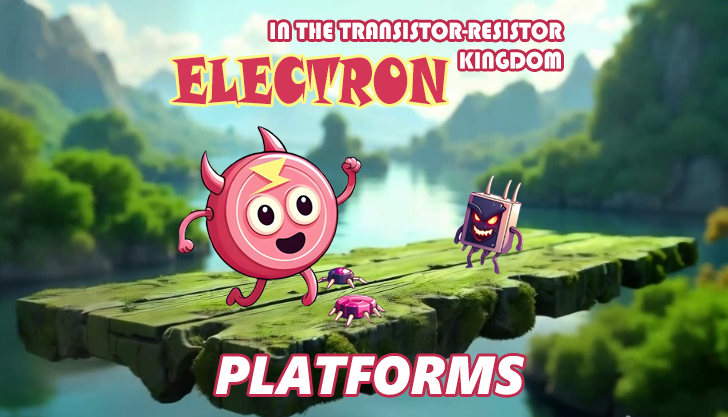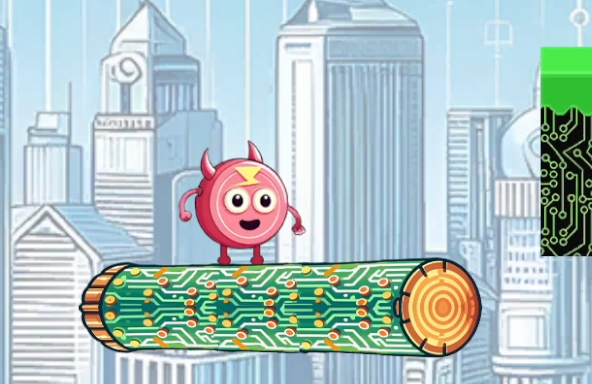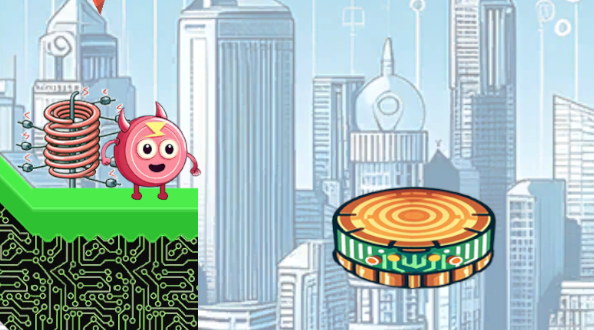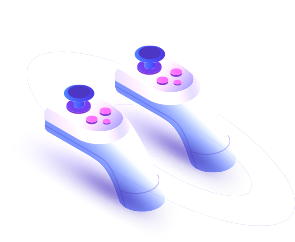Platforms in the game Electron in the Transistor-Resistor Kingdom
29 Oct 2024

Platforms are the basic game elements in the platformer genre. They are surfaces or objects on which the player can move, jump, and overcome obstacles. The player's task is to maneuver on these platforms to avoid falls, reach desired points, or go around obstacles.
A Brief History of Platformers
The platformer genre emerged in the 80s and is considered one of the earliest in the video game industry. The first popular games, such as Donkey Kong (1981), Super Mario Bros. (1985), and Sonic the Hedgehog (1991), became the founders of the genre, laying down the basic principles of interaction with platforms. Players jumped on static surfaces, avoided enemies, and looked for secrets, which made platforms the basis of the gameplay. Over time, platformers have continued to evolve, expanding the capabilities of platforms and adding unique mechanics that make gameplay more interesting and challenging, such as in the game Electron in the Transistor-Resistor Kingdom.
How do platforms work in games?
Platforms work on several principles. The basic idea of a platform is to give the player a surface to move on, usually in conditions where there is a danger below, such as a chasm or water. Depending on the type of platform, additional properties can be added to it:
Movement physics: the platform can be mobile, and the player must adjust to its movement.
Gravity: allows you to jump and return to the platform, creating the effect of height.
Speed and inertia: the movement of the platform or the player on the platform can complicate the gameplay, requiring more skill from the player in controlling it.

Platform classification
Platforms can be divided into several types, each of which adds its own features to the game:
Static platforms
These are stationary platforms that serve as a basic support for the player. They are easy to navigate and are often used to create safe spots where the player can take a break.
Dynamic platforms
Platforms that move (up and down, sideways, in a circle, etc.). They make the game more challenging, as the player needs to synchronize their movements with the platform's movement.

Disappearing (appearing) platforms
They appear and disappear at certain intervals, requiring the player to react quickly and accurately. Examples can be seen in levels with "invisible" platforms.
Interactive platforms
These platforms are activated or change their behavior when interacted with - for example, by pressing a button.
Unique platforms with effects
Some platforms can teleport the player, speed them up, or reduce their weight. They make the gameplay more interesting, especially in games where the platforms lead to secret areas or bonus levels.
Using Platforms in Gameplay
In platformers, platforms are not only the basis for movement, but also a tool for creating unique gameplay situations. They make levels more difficult and allow developers to add variety to levels. Here are some examples of how platforms affect gameplay:
Increasing difficulty: Making a level more difficult by using different types of platforms makes the game more interesting and encourages the player to master new skills.
Creating atmosphere: Platforms can be unique to each level, reflecting its style - for example, lollipops in a snow level or spaceship wreckage in a futuristic world.
Encouraging exploration: Platforms sometimes lead to hidden areas, rewards or secrets, which encourages the player to explore the levels.
Conclusion
Platforms in platformers are not just surfaces to jump on. They are a key element of the gameplay, which is influenced by many factors, from physics to level design. Well-designed platforms make the game not only challenging and interesting, but also unforgettable, leaving the player with a sense of real adventure.
Related games
Electron in the transistor-resistor kingdom
Game: Perform tasks and rest cool. 2524 people play!
Play gameRelated news
Online broadcast about the game Electron in the Transistor-R...
broadcast about the game Electron in the Transistor-Resistor Kingdom
Read moreTeleport as a device for moving matter in space and time
This is a high-tech device that can instantly move a player from one point in the game world to another using plasma tec...
Read moreSound Speakers Embedded into Trees
These sound trees can produce atmospheric sounds such as birdsong, wind, or wildlife sounds, creating a relaxing environ...
Read more




